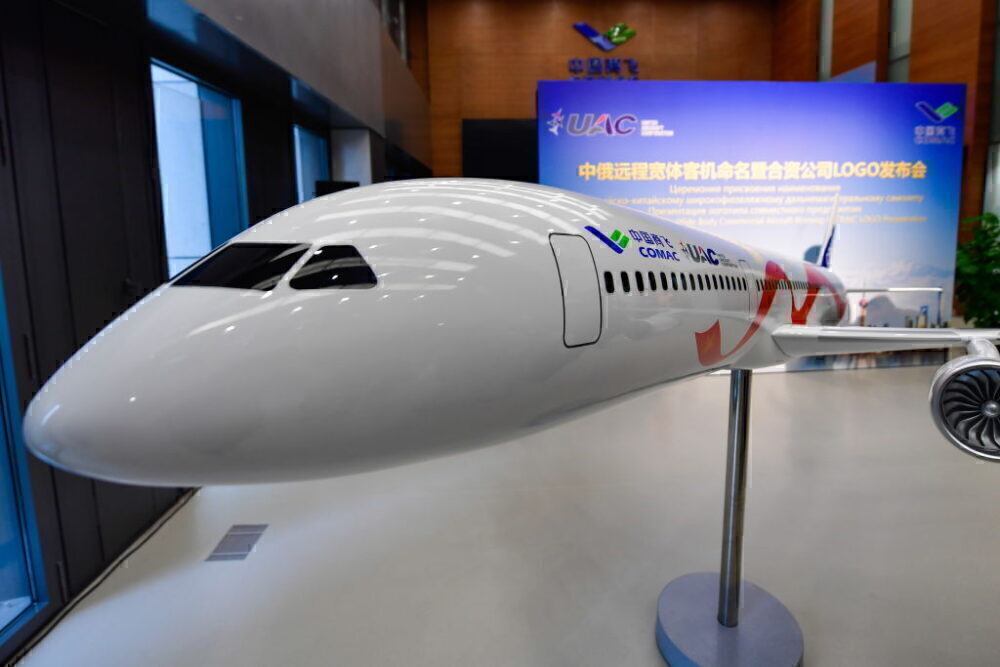When it comes to passenger aircraft, not much has changed since the dawn of the jet age. Tubes with wings are the order of the day, and so it has been and shall be forevermore. Or maybe not. There have been a few widebody concepts that have stuck their head above the parapet of aviation design, and could completely change the way we fly in the future.

Stay informed: Sign up for our daily and weekly aviation news digests.
Airbus’ blended wing
It was over a year ago when Airbus revealed its ‘blended wing’ aircraft demonstrator, a scale model of a potential plane for future long-haul travel. The MAVERIC (Model Aircraft for Validation and Experimentation of Robust Innovative Controls) explores the possibility of reshaping the fundamental design of passenger jets to create a more fuel-efficient, aerodynamic aircraft.
While the comparisons being drawn up against the MAVERIC lean largely on the single-aisle market, you could hardly call this a narrowbody. Airbus says that the design has the potential to deliver real environmental performance benefits, including around 20% lower fuel burn than the equivalent standard aircraft.

Its spacious design also opens up the potential for new types of propulsion systems. With all that storage space in the large wingspans, Airbus saw opportunities for integrating one of aviation’s biggest future challenges – hydrogen fuel. Indeed, it seems like the MAVERIC was the design inspiration for one of the planemaker’s ZEROe concepts unveiled last year.

While traveling in a flying wing might seem radical, it’s not the only concept that has people wondering what the future might hold.
The super-efficient tri-wing
Alabama startup SE Aeronautics has similarly thrown the rulebook out of the window with its own future aircraft concept. The SE200 (SE standing for Super Efficient) uses a tri-wing arrangement, with a double tail fin and two highly efficient engines mounted to the rear.

Fuel storage is no longer part of the wing functionality, meaning wings can be thinner and more aerodynamic. Instead, fuel is stored on a bladder on top of the fuselage, which itself is designed to be of monocoque construction. That means it’s made from one piece of composite material, reducing fatigue and improving safety for passengers.

The company claims that this unusual design will allow for short take-off and landing capabilities, as well as a 70% reduction in fuel consumption. It remains to be seen, however, if this creation ever makes it off the drawing board.
The double bubble
When a development team includes the likes of Aurora Flight Sciences, Massachusetts Institute of Technology (MIT), and Pratt & Whitney, you know the concept is going to be something extraordinary. The Aurora D8 ‘double bubble’ widebody is based on the fuselage of a 737-800 but is essentially two fuselages placed side by side – making for a twin-aisle cabin configuration.

Although it’s a widebody, it was never intended to fly long-haul. The D8’s mission profile would be for 180 passengers to a range of 3,000 NM, with the added benefit of faster loading and deplaning thanks to its twin aisles. But the real objective, naturally, is to achieve lower fuel burn.

The developers suggest that the D8 could achieve a 49% reduction in fuel burn, mostly thanks to its unique appearance. The natural laminar flow on the bottom of the wing and its lifting body shape would reduce Boundary Layer Ingestion (BLI), meaning it could successfully fly with smaller and lighter engines. Placing those engines above the flat fuselage means they could work to energize the wake for a reduction in drag.

As with the other featured aircraft here, for now, this is just a paper plane. But there is one disruptor that is not quite so groundbreaking in design terms that is very likely to appear in our skies in the coming years.
China’s contender
While these other featured planes are nothing more than concepts right now, one manufacturer is putting its money where its mouth is and jumping into developing an alternative to Boeing and Airbus. Chinese-Russian partnership CRAIC is working on its CR929 widebody, a proposed 280 seat aircraft that is set to compete with the likes of the Dreamliner.

The company has revealed plans to offer the CR929 in three different configurations. The CR929-600 will fly 280 passengers to 6,480 NM, the CR929-500 will carry 250 to 7,560 NM, and the larger CR929-700 will boast a capacity of 320 passengers but only to a range of 5,400 NM.
The production of the CR929 is expected to commence later this year, but it will be some time before we see the aircraft entering fleets. Predicted first deliveries are not expected until 2029, and it remains to be seen if the CRAIC-produced aircraft can really compete with the industry stalwarts.
Which of these aircraft do you think has the potential to disrupt the widebody market? Let us know in the comments.






